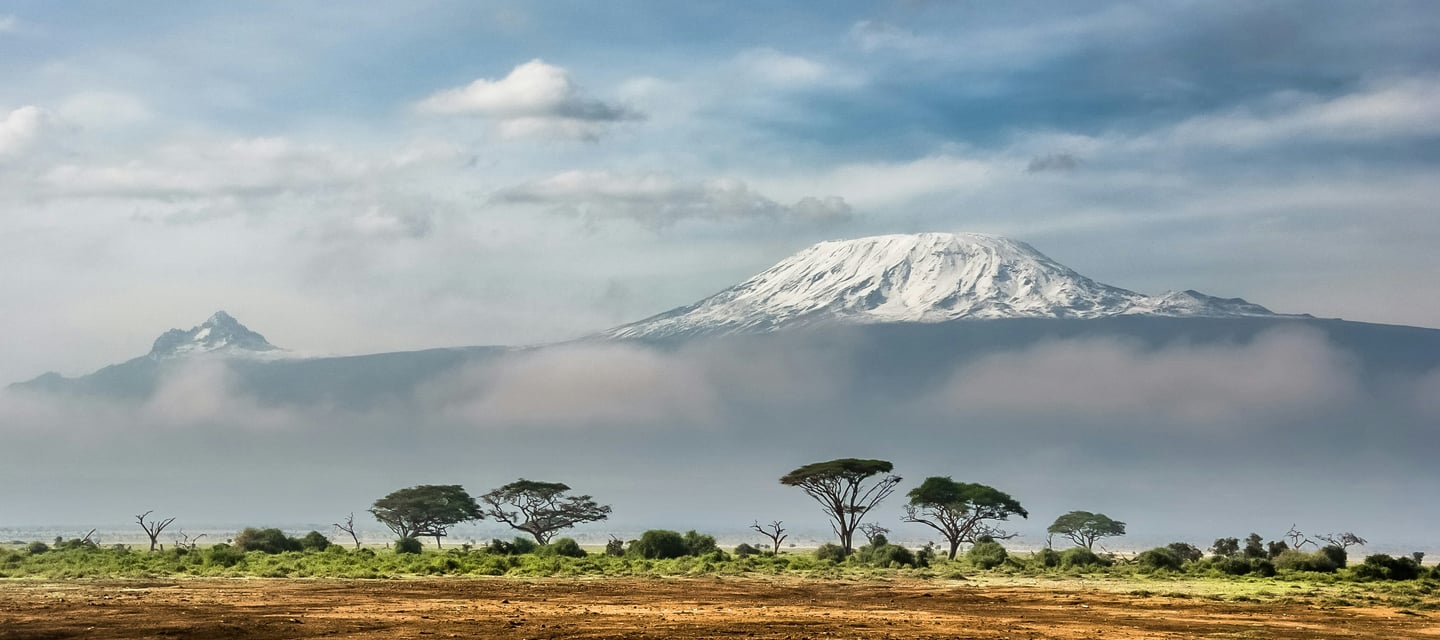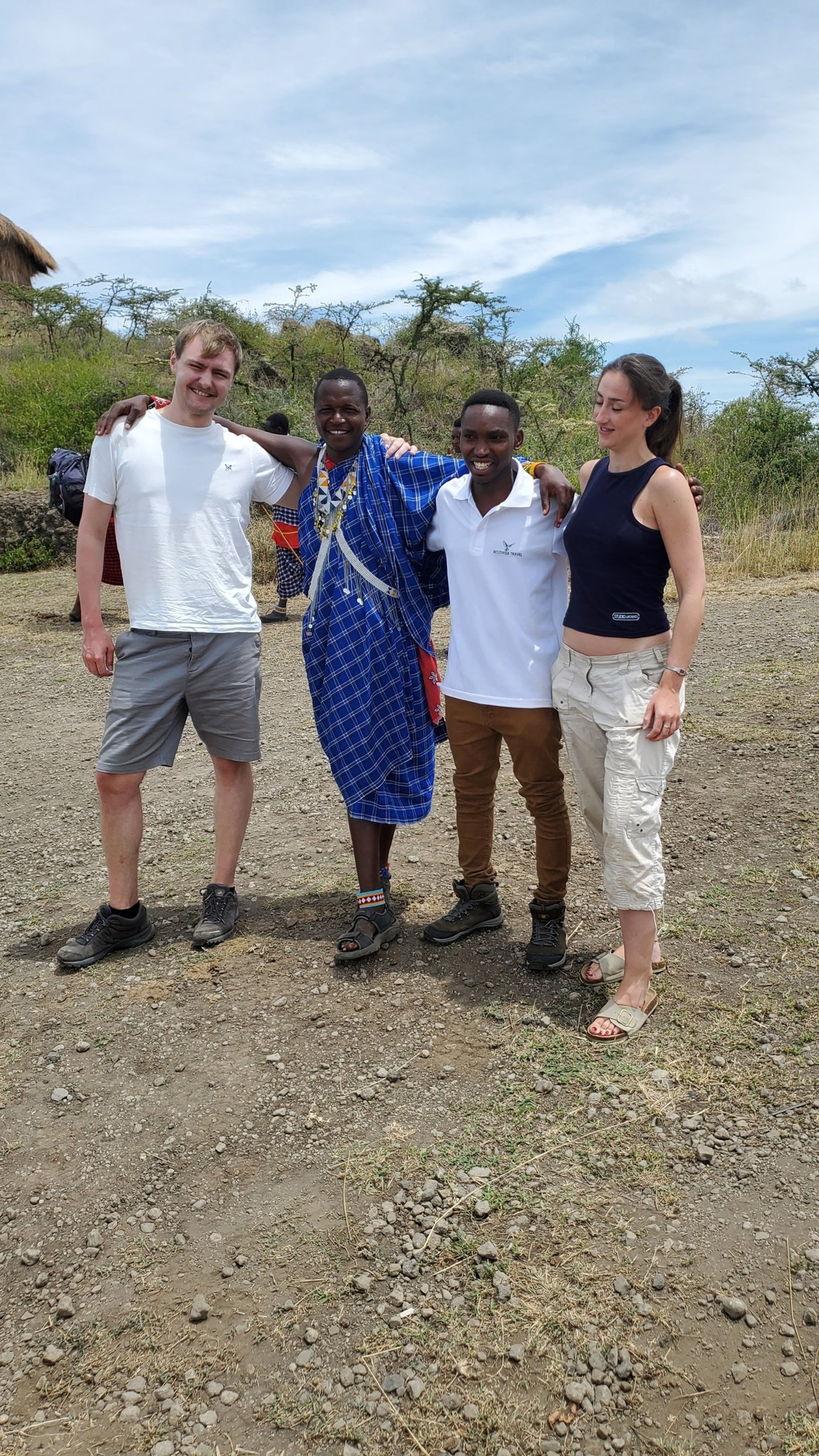More about mount kilimanjaro
Kilimanjaro is not just a climb; it’s a once-in-a-lifetime experience that takes you through five distinct ecosystems, from tropical rainforests to alpine deserts. Imagine trekking through lush jungle trails, crossing high-altitude plateaus, and standing at the roof of Africa, where you’ll witness the sun rising over endless plains.
With the expertise of our guides and a route suited to your pace, this will be a challenge you will cherish forever.
A Journey Like No Other
Climbing Mount Kilimanjaro isn’t just about reaching the top—it’s about the journey itself. The climb offers incredible diversity:
Rainforest Zone: The lower slopes are covered in lush vegetation, home to monkeys, birds, and exotic plant life.
Heather and Moorland Zone: As you ascend, the landscape transitions to vast moorlands and alpine meadows, creating an otherworldly atmosphere.
Alpine Desert Zone: The final stretch reveals barren landscapes, where the summit seems so close you can almost touch it.
The Challenge and the Reward
The climb is challenging but accessible. With several route options like the Machame, Marangu, and Lemosho, there’s a path for every adventurer. The higher you go, the thinner the air, but the views become more spectacular with every step. The feeling of reaching the summit is beyond words.
Kilimanjaro at Night
Imagine trekking in the silence of the night to catch the first light at the summit. The night sky above is full of stars, and the sense of peace is unlike anything you’ve ever felt. As you stand at Uhuru Peak and take in the world below, it will all feel worth it.
Did You Know?
Mount Kilimanjaro is one of the world’s most iconic freestanding mountains, which means it isn’t part of any mountain range but stands alone in the African plains. This gives it its stunning, isolated appearance.
Kilimanjaro is also a glacial mountain, home to glaciers and snowfields that are rapidly disappearing due to climate change. Climbing Kilimanjaro now is not just an adventure—it’s a chance to witness these rare, fragile landscapes before they change forever.
In addition, Kilimanjaro holds cultural significance to the local Chagga people, who live at its base. For centuries, they’ve revered the mountain as sacred, incorporating it into their mythology and daily life.
Tips for Climbing Kilimanjaro
1. Physical Preparation:
While Kilimanjaro doesn’t require technical climbing skills, it’s important to be in good physical condition. Training and hiking at higher altitudes can help you adjust to the conditions.
2. Layered Clothing:
The weather on Kilimanjaro can vary dramatically, so pack layers. You’ll need lightweight clothes for the trek, as well as warm layers for the summit night.
3. Hydration:
The higher you climb, the more critical it is to stay hydrated. Carry a water bottle and make sure to drink plenty of water throughout the climb.
4. Altitude Acclimatization:
Kilimanjaro’s altitude can be tough on your body. We recommend taking it slow to allow for proper acclimatization, and our experienced guides will ensure you do it safely.
5. Packing Essentials:
Bring sunscreen, lip balm, sunglasses, a camera, and comfortable hiking boots. Don’t forget a headlamp for night hikes!
Contact us today to reserve your spot for this epic adventure!
Mount Kilimanjaro National Park ( Kilimanjaro national park) This park shelters Africa’s highest point Mount Kilimanjaro, a very popular creation that holds quite a strong profile. Mount Kilimanjaro, along with its three volcanic cones “Mawenzi”, “Kibo” and “Shira” is a dormant volcanic mountain in Tanzania. It is one of the seven summits and also turns out to be the highest freestanding mountain in the whole world. It is hiked by so many tourists who travel to Tanzania annually and is one of those daring places every adventurous traveler should visit at all costs. The climbing experience is quite physical, tiresome and risky but the feeling of hiking till the Uhuru peak is an accomplishment you will always be proud of hence, definitely worth every effort of Your endeavors. The mountain rises approximately 4,900 meters from the base to a breathtaking 5,895 meters above sea level.
Tanzania’s Kilimanjaro National Park is situated near a town called Moshi and can easily be accessed by plane or road via Arusha town. It spans up to approximately 650 square kilometers and is currently under the administration of Tanzania National Parks Authority (ΤΑΝΑΡΑ). Besides the daring climbing adventures that take place in the park each year, Mount Kilimanjaro National Park turns out to be a great wildlife viewing destination too and boasts in various species of fauna. Several species of wildlife can be found in the Kilimanjaro National Park and some of these include the Cape Buffaloes that mainly inhabit the montane forests, grasslands, and moorland occasionally. The African
Mount Kilimanjaro National Park: is located in Tanzania south of the border to Kenya. It is also situated North East of Arusha National Park and a person in Arusha town is very capable of viewing the Mountain clearly from the comfort of their hotels or lodges as the sip a cup of tea.
.



